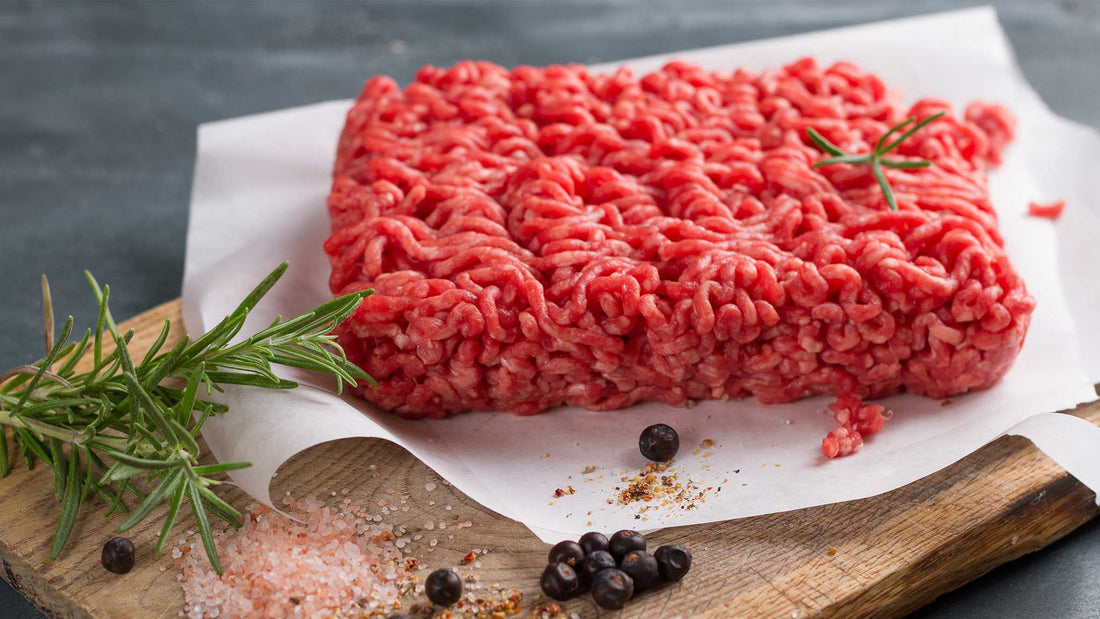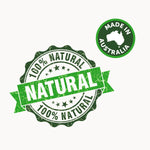
What’s the Difference Between Human Grade vs Pet Grade Meat in Pet Food?
You’d think it would be simple to read a label and understand what it means, right? But when it comes to pet food labels, the terms human grade and pet grade carry very different standards. Knowing the difference can help you choose healthier, safer food for your dog or cat.
What Does Human Grade Meat Mean in Pet Food?
Human grade meat is (usually) legally suitable for people to eat, or has followed a human grade safety standard of processing. That means it’s sourced, processed, and stored under the same strict food-safety laws that govern supermarkets, restaurants, and butcher shops. These facilities are licensed and inspected regularly, with strict quality-control checks on everything from hygiene to temperature regulation. If you see “human grade” on a pet food label, it means every step, from the slaughterhouse to the packaging plant, has been certified for human consumption.
Because of this oversight, human-grade pet foods are usually fresher, cleaner, and more nutrient-dense than products using pet-grade ingredients. They also avoid by-products and contaminated material that could never be legally sold for human diets (although this doesnt always mean they are better, as ingredients can still differ).
What Is Pet Grade Meat in Dog and Cat Food?
Pet-grade meat (sometimes called feed-grade meat) is held to a much lower standard. It’s not fit for human consumption, and in many cases includes parts of animals that humans don’t eat, such as heads, feet, or even condemned material that failed inspection for the human supply chain.
These ingredients are processed in facilities licensed for animal feed, not for human food. Regulations are looser, inspections are less frequent, and quality can vary widely. Pet grade proteins may also be highly rendered (cooked at extreme temperatures), which can reduce their natural nutrient value.
Why the Difference Between Human Grade and Pet Grade Matters
For pet parents, the choice isn’t just about marketing claims; it’s about nutrition, digestibility, and safety. Human-grade meats retain more of their natural proteins, fats, and micronutrients. They’re less likely to contain harmful contaminants, and they tend to be more bioavailable (meaning your pet can absorb the nutrients better).
Pet grade meats, on the other hand, can lead to more fillers, harder digestion, and a higher risk of questionable ingredients making their way into your dog or cat’s bowl.
How to Check Labels and Ask the Right Questions
If you’re comparing pet foods:
-
Look for the words “100% human grade”, not just “made with human grade ingredients.” The latter can still mean only a small portion of the recipe qualifies.
-
Ask the supplier or manufacturer whether their facility is licensed for human food production.
-
Research whether the brand is transparent about sourcing, processing, and third-party testing
FAQs About Human Grade vs Pet Grade Meat (Australia)
1. What does “human-grade” meat mean in pet food here?
In Australia, there is no single official legal definition of “human-grade” pet food. The Pet Food Industry Association of Australia (PFIAA) explains that the term is generally used when all ingredients come from the human food supply chain and the food is processed in facilities certified for human-edible food. Anything less risks being misleading under Australian Consumer Law.
2. What is “pet-grade” meat?
“Pet-grade” (or feed-grade) meat refers to ingredients that are not suitable for human consumption. It may include animal parts not typically eaten by people. Production is governed by the Standard for the Hygienic Production of Pet Meat (PISC Technical Report 88, Amended 2009), with oversight from state regulators such as PrimeSafe in Victoria.
3. Are human-grade claims regulated?
Human-grade claims are allowed, but they must not mislead. Under Australian Consumer Law, brands must ensure any claim is truthful and substantiated. PFIAA states the claim only applies if the entire product meets human food standards, not just one ingredient.
4. What labelling rules apply?
Pet foods made and sold in Australia are expected to follow AS 5812 (Manufacture and Marketing of Pet Food), which sets guidelines for labelling. Requirements include:
- Displaying the words “PET FOOD ONLY” clearly on the label.
- Listing ingredients and nutritional information.
- Stating whether the food is “complete” (balanced for daily feeding) or “complementary.”
AS 5812 is voluntary, but many reputable manufacturers adopt it.
5. Does human-grade automatically mean better for pets?
Not necessarily. “Human-grade” speaks to sourcing and processing standards. It doesn’t guarantee superior nutrition or safety. A product must still be formulated for dogs or cats and meet recognised nutritional standards (like AAFCO in the U.S., or equivalent testing in Australia).
